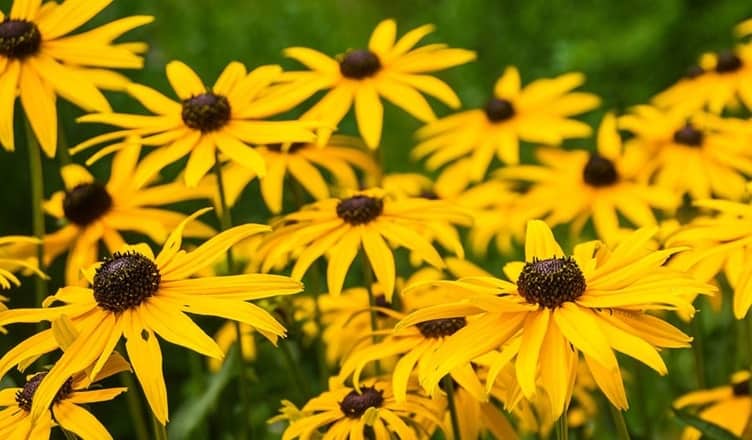Late summer, and here in New England the hot, dry days are likely to be punctuated with sudden thunderstorms that drop lots of water in a short amount of time, rather than with long, soaking rains. When a thunderstorm unleashes a torrent of rain, all that water landing on impervious surfaces like roofs, driveways, and walkways often runs off into the nearest storm drain and from there eventually to local waterways, or it goes directly into nearby streams, rivers, and lakes. Even when the rain lands on lawns, gardens, or other vegetated surfaces, so much comes down so quickly in a thunderstorm that much of the needed water runs off rather than soaking into the ground.
The problem with runoff is that it can pick up and carry all sorts of pollutants as it makes its way into the watershed, from nutrients like nitrogen and phosphorous that fuel algal blooms to pesticides, herbicides, oil, grease, heavy metals, and harmful bacteria. Equally important, water that runs off is water that is not available in the soil for thirsty plants to take up.
Which brings me to the topic of rain gardens. These are gardens shaped like shallow bowls that are designed to capture storm water and hold it until the ground can absorb it. By capturing a sudden deluge of water before it becomes runoff and letting it soak into the ground, a properly designed rain garden helps protect the environment and recharges the groundwater. It can also be an attractive addition to your landscape and, an added bonus, many of the plants that are suited to a rain garden are natives that attract beneficial and pollinating insects, butterflies, and birds. It’s win win all round!
Location
Locate your rain garden where downspouts or swales can direct water from roofs, driveways, and other impervious surfaces, but place it at least 10 feet away from the foundation of your house, at least 30-50 feet away from septic tanks, leach fields, and drinking water wells, and away from any other underground utilities. When siting your garden, it’s also important to remember what a rain garden is not. It’s not a bog or a swamp; it’s a temporary water holding basin. So it doesn’t belong in a spot that is naturally wet or where water stands for long periods after a rain. A low spot that is fairly flat with soil that allows any standing water to drain within a day or two after a storm is best. To check if the soil drains fast enough, dig a test hole about 10 inches deep and fill it with water. If the water drains away within 48 hours, you’re good to go.
A common concern is that a rain garden will become a ″mosquito garden″ as well. But because it’s is filled with water for only brief periods of time, you don’t need to worry about a rain garden adding to the local skeeter population.
Plant Material
Similarly, the plants that are appropriate for a rain garden are not wetland plants that need constantly wet soil. Instead, choose plants that can tolerate both temporarily saturated and drier soil. Both herbaceous and woody plants can be appropriate choices. Specific plant choices will depend on your climate, the size of your garden, and your site’s exposure. Fortunately, there are many online resources with information on designing, planting, and maintaining rain gardens in various regions of the country. Or contact your local Extension Service or Master Gardeners program for advice.
Size
How big should you make your rain garden? Ideally it should be about 20-30 percent of the size of the area draining into it; for example, a 300 sq. ft. garden to hold the runoff from a 1000 sq. ft. roof. The deeper the garden and the more freely draining the soil, the greater the volume of water a given area will be able to accommodate.
I recently installed a rain garden to intercept storm water as it comes off the roof of my house before it sheets across the paved driveway and down the street to the storm sewer. Drainage in my sandy soil is good, so I excavated the area about 6 inches deep; then leveled out the interior and add compost to the soil. I selected both woody and herbaceous plants to provide a changing display of seasonal interest. Most of the plants are natives (or cultivars of natives) of areas of the eastern U.S. and all will weather periods of saturated soil as well as drier conditions. Goatsbeard (Aruncus dioicus ‘Kneiffii’) begins the floral show in June with arching sprays of ivory-white flowers. Later, spires of fragrant white flowers adorn dwarf summersweet (Clethra alnifolia ‘Hummingbird’) from midsummer on, attracting butterflies and bees, while purple coneflower (Echinacea purpurea) and turtlehead (Chelone lyonii) add bright notes of color in mid to late summer. Variegated dogwood (Cornus alba ‘Elegantissima’) provides year-round interest with its green and white variegated leaves in summer, red stems in winter, and white berries that attract birds. Inkberry (Ilex glabra ‘Shamrock’) with its narrow, glossy evergreen leaves provides a nice textural contrast to the lady ferns (Athyrium felix-femina) that fill in the shadier side of the garden. This new garden is now a lovely spot that will help the environment, wildlife, and the water table — and add beauty and color to my front yard.




